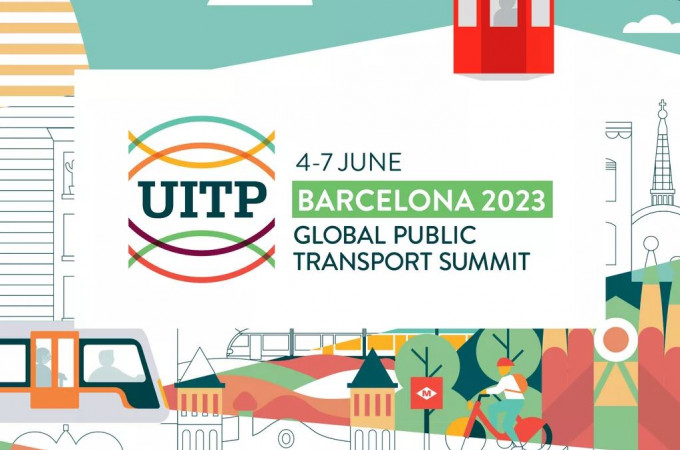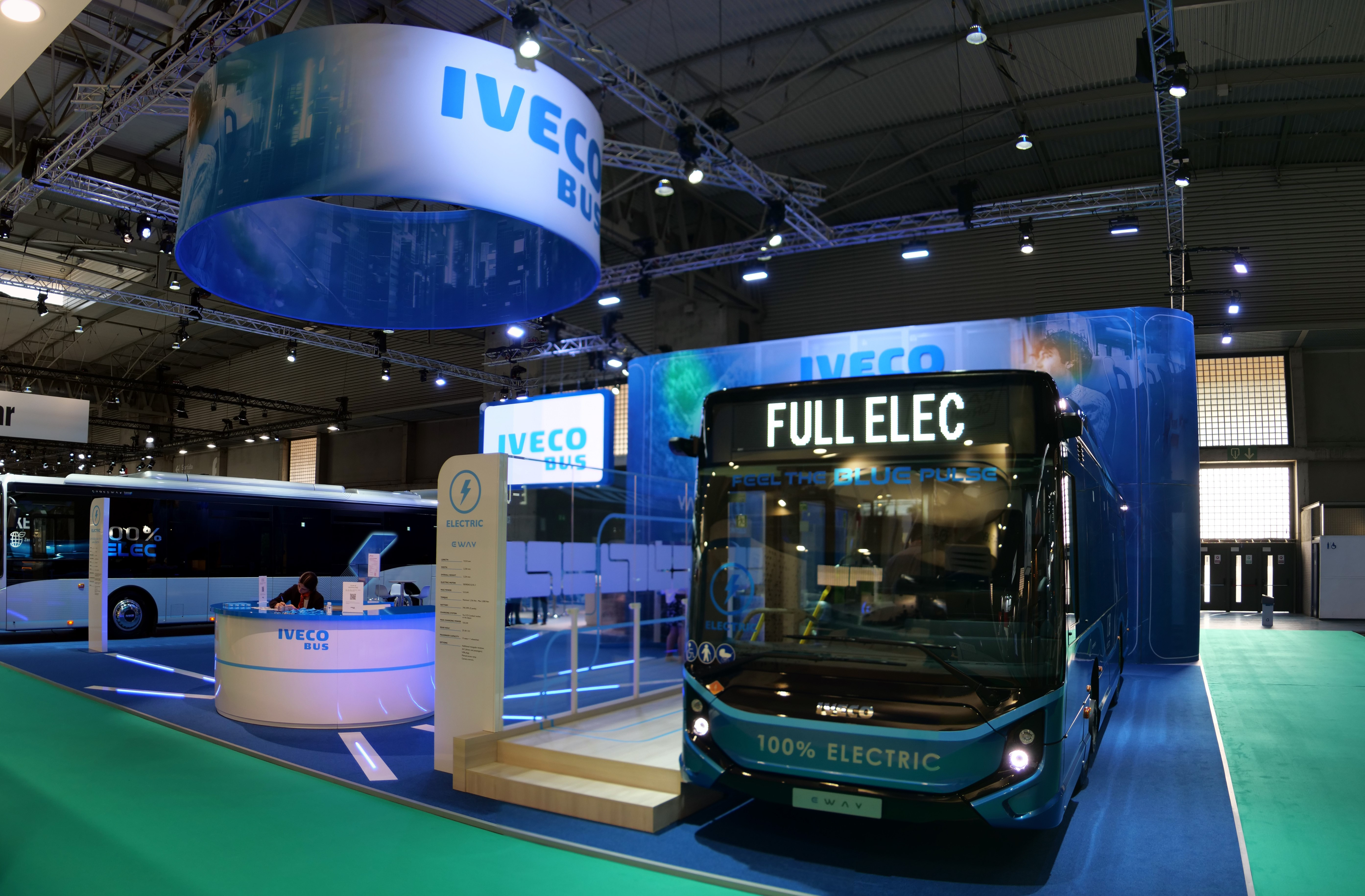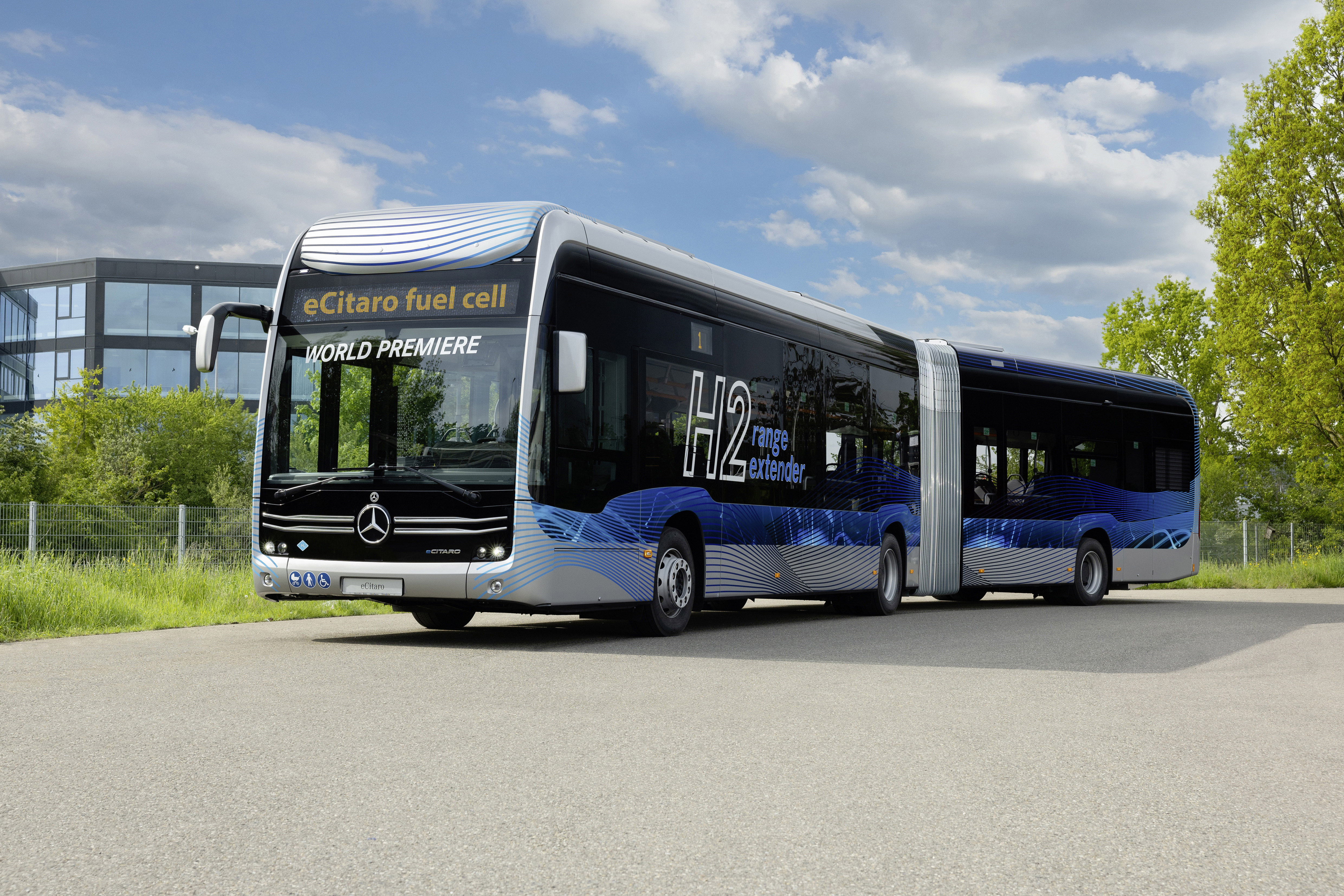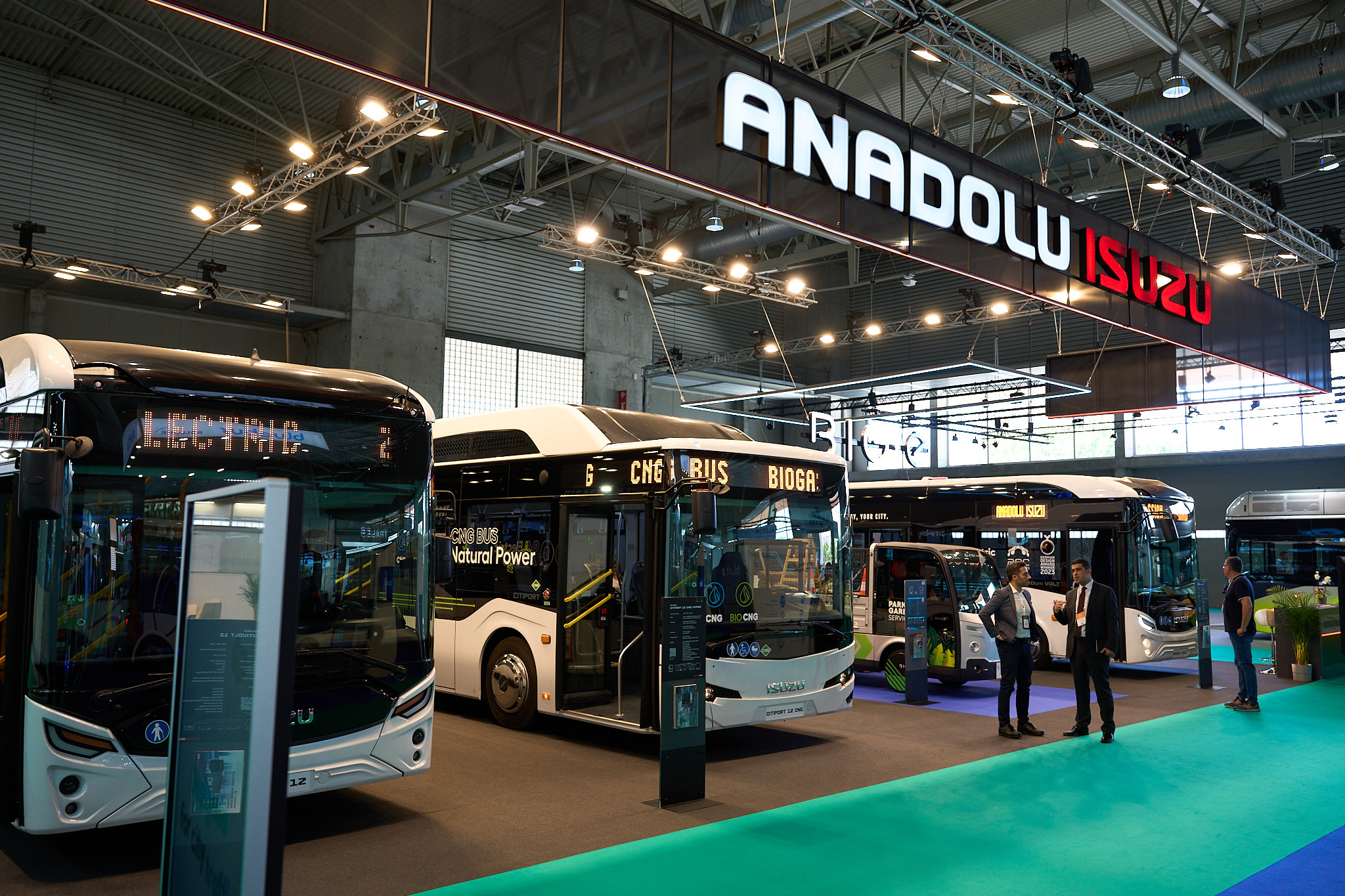T&BB report from UITP Global Public Transport Summit 2023 in Barcelona
By Bradley Osborne - 27th June 2023

Spain – Between 4-7 June, the Union Internationale des Transports Publics (UITP) held its biennial Global Public Transport Summit in Barcelona, Spain. The last such conference should have been held in 2021 in Melbourne, but the organisers took the decision to cancel it due to stringent restrictions on international entry to Australia at the time. Happily, the UITP summit returned after its four-year hiatus with plenty of energy. In the following, we report on developments related to two topics: electric vehicles and artificial intelligence.
Electric vehicles at the UITP summit
The conference featured electric vehicle showcases from names such as MAN, Mellor, Otokar, and Van Hool. For the most part, the vehicles shown – the Lion’s City E, the Sigma, the e-Kent – are familiar to those in the bus industry. There were a couple of new vehicle launches. Iveco Bus presented two new battery electric models in the Crossway and E-Way ranges. The 13-metre ‘Crossway Le Elec’ is an intercity bus with a central electric motor providing 330 kW of power and 2,200 Nm max torque. Its FPT lithium (NMC) batteries (maximum capacity 485 kWh) provide a range of 400 kilometres. The 9.5-metre new-generation E-Way midibus is installed with the latest Siemens ‘Elfa III’ electric motor, providing 185 kW of power and 3,000 Nm max torque. Deliveries of the Crossway Le Elec will begin from next month, while the new-generation E-Way will reach customers starting in the second half of 2024.
A major announcement coming out of UITP was that the company is creating a new department known as the Energy Mobility Solutions unit, fully focused on supporting its customers with charging infrastructure, fleet management and aftermarket services. Energy Mobility Solutions will identify the best charging strategy, the specificities of the vehicle, the sizing of the batteries, the configuration of the chargers and the infrastructure the customers will need.

Iveco Bus stand at UITP
EvoBus debuted a Mercedes-Benz ‘eCitaro’ installed with a hydrogen-powered fuel cell range extender from Toyota. EvoBus began taking orders in October 2022 and the company has finally moved into series production. The designers emphasised vehicle range (350km) with high passenger capacity (articulated version: 128 passengers) as the bus has been designed to operate on longer routes without having to stop and recharge intermittently. This is thanks to a battery capacity of up to 392kWh, powered by NMC 3 high-performance batteries, while the fuel cell serves as a hydrogen generator to extend the range.
Other vehicles shown include city buses from Anadolu Isuzu, a fuel cell coach from Safra, and the latest ‘Citea’ from VDL. Four vehicles were at the Anadolu Isuzu stand: the 12m Citivolt bus, NovoCiti Volt, Citiport CNG and the Big e prototype, which is set to be completed in the second half of next year. The Big·e delivery vehicle offers a volume of four cubic metres, a load capacity of 1000 kg, and a range of up to 150 km on a single charge. The battery can be charged using a standard socket and a full charge can be reached within three and five hours. Available in 2024, the Big·e feature Brist axles and will be produced at Anadolu Isuzu's production facility in Çayırova, Turkey.
Safra’s coach was a Mercedes-Benz ‘Intouro’ retrofitted with a fuel cell electric drive system made up from components sourced from several firms. The fuel cells come from French components supplier Plastic Omnium, while the 350-kW motor and auxiliary batteries come from Dana and Microvast respectively. Six hydrogen tanks at 35 bar pressure carry 35 kg of fuel, providing a 500-kilometre range. Safra already has 23 fuel cell electric buses running in France, either built from the ground up or adapted from a diesel base. Near Toulouse, Safra reportedly has around 200 workers retrofitting old buses and coaches or assembling new vehicles, all using the same fuel cell powertrain. The ‘iCity’ – Safra’s proprietary fuel cell bus – will be delivered to customers beginning in 2024.
VDL showcased the new generation ‘Citea LF-122’, a 12-metre battery electric range which it has been working on for the past couple of years. Company representatives told T&BB that the designers went back to the drawing board with regards to the powertrain layout. For example, the battery packs have been re-placed under the floor of the bus to optimise the weight distribution. Thanks to this and several other changes, VDL can now fit 8 additional seats in the LF-122. Production of the new-generation line has already begun at Eindhoven, Netherlands, with deliveries starting imminently.

Mercedes eCitaro bus
Polish manufacturer Solaris looked forwards to the next Busworld conference in October, where it plans to launch a new generation of 12- and 18-metre electric buses. At its press briefing at the UITP summit, CEO Javier Iriarte told delegates that over 3,000 zero-emission buses have been contracted altogether (i.e., delivered or on order) by Solaris customers. When questioned on the company’s strategy to expand into North America, Iriarte said Solaris would be bringing a “proven product” to a market with “significantly” fewer OEMs in the urban and interurban segments to compete against. In addition, Solaris’s parent, the CAF Group, has an established footprint in North America.
Autonomy and AI at the summit
While exhibitors presented electric buses on their stands, conference delegates discussed autonomous vehicle technologies at one of the summit’s ‘Spotlight Forums’. Spokesmen from MAN and Irizar outlined the work their respective companies have already undertaken to develop roadworthy autonomous buses. Since 2016, Irizar has contributed to four self-driving bus projects: in the first one, an Irizar autonomous bus was put on the roads of Málaga with onboard driver supervision. Further projects focused respectively on system fail-safes, vehicle-to-vehicle communication, and Level 4 autonomy. MAN, which is contributing to Munich’s ‘MINGA’ project to deploy a self-driving bus by 2025, estimates that operators could cut their long-term operation costs by up to a half by employing electric buses with autonomous driving technology.
Michał Wendeker, CEO of Polish startup Autonomy Now – specialising in vision-based perception systems for bus safety systems – argued that AI-powered ADAS technology is crucial to a future vision of zero road fatalities. Placing “human error” at the root of road accidents, Wendeker claimed that ADAS could save 10,500 lives every year by 2030 and prevent up to 60,000 major injuries.1 On the whole, AI-powered ADAS could reduce accidents by 47%: this is based on extensive testing carried out in simulations. Wendeker said that artificial intelligence as applied to vehicle perception systems has been boosted by two developments: the emergence of machine learning and advanced graphics processing units for learning in simulation.

Anadolu Isuzu stand at the 2023 UITP in Barcelona
Cutting-edge advances in artificial intelligence are not yet translating into viable commercial products on the conference show floor. One of the few to present a product in this area was Israeli tech firm, Mobileye. It showcased its ‘Fisheye’ blind-spot detection system, which uses AI-powered vision-based perception to identify pedestrians in the bus’s vicinity. Cameras on the front and side of the bus feed information to the computer, which can differentiate between pedestrians and cyclists. When either type of road user enters a blind spot – the forward blind spot (up to 3.7 metres) or the side blind spot (7 metres ahead to 30 metres behind relative to the driver) – a visual and aural alert is triggered. Safety systems of the kind offered by Mobileye will become compulsory in new vehicles from July 2024 in the EU; as such, Mobileye could name MAN, Solaris, and Iveco as its customers.
1 Wendeker based his claims on figures from the ‘Europe on the Move’ initiative by the European Commission.



